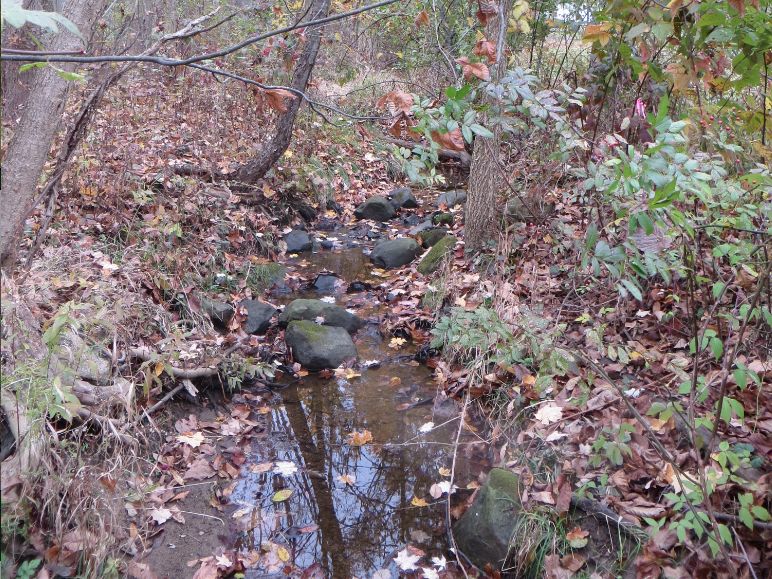FRY FARM IN RICHFIELD, OHIO
HABITAT 3
STREAMS
 |
||
West Branch on edge of Marsh |
Middle Branch on East Line |
The health of streams, particulary headwater streams, affects the health of creeks and rivers further downstream. They are important in sediment, nutrient, and flood control, serve as corridors for the movement of wildlife, and provide water and food for downstream communities. 1) Springs often give rise to to small streams referrred to as headwater streams. Headwater streams can flow year-round (permanent), for part of a year (intermittent) or only during rain events (ephemeral) 2) Importantly, they provide a safe habitat for the preservation of species that may be damaged or destroyed by pollution or habitat removal further downstream. The two headwater streams of Fry Farm are the West and Middle Branch of the Upper North Fork of Yellow Creek. The West Branch includes the streams from two upland springs, joined by a stream flowing from the rentention dam on Rolling Acres Subdivision to the North. |
Altogether, the West and Middle Branch add 1765 feet to the Yellow Creek system. They may all be characterized as permanent streams since they flow even during the driest periods of Summer. These streams are directly connected to the Medina Summit Land Conservancy via a 72 inch conduit under Interstate 271. Combining with other upland streams, they then flow through the Bath Nature Reserve in Bath, Ohio, the town of Yellow Creek, and ultimately, into the Cuyahoga River. Click here for Maps showing the connection between these streams, the Medina Summit Land Conservancy, and Subwatershed 38 of the Yellow Creek Watershed. Recent flooding of Yellow Creek nearer to the junction with the Cuyahoga River dramatically underscores the importance of headwater streams in flood control. |
Amphibians utilize streams for feeding, reproduction, and hibernation where rate of flow is not very high, as the case on the Fry Farm. 3) Typical almphibians in the area include several species of salmanders (e.g. Northern Dusky Salamanders and Two-lined Salamanders) 4) While salamanders and crayfish have been seen in these streams on the Fry Farm, cataloging amphibian species has not yet begun. The exception, of course, are the salamanders and crayfish found in the headwater streams directly emanating from the springs.
|
1. "Amphibians of Ohio," Ohio Biological Survey, Inc. (2013) p. 43. 2. "Amphibians of Ohio," p. 43. |
3. "Amphibians of Ohio," p. 46. 4. "Amphibians of Ohio," p. 46, 230. |
|